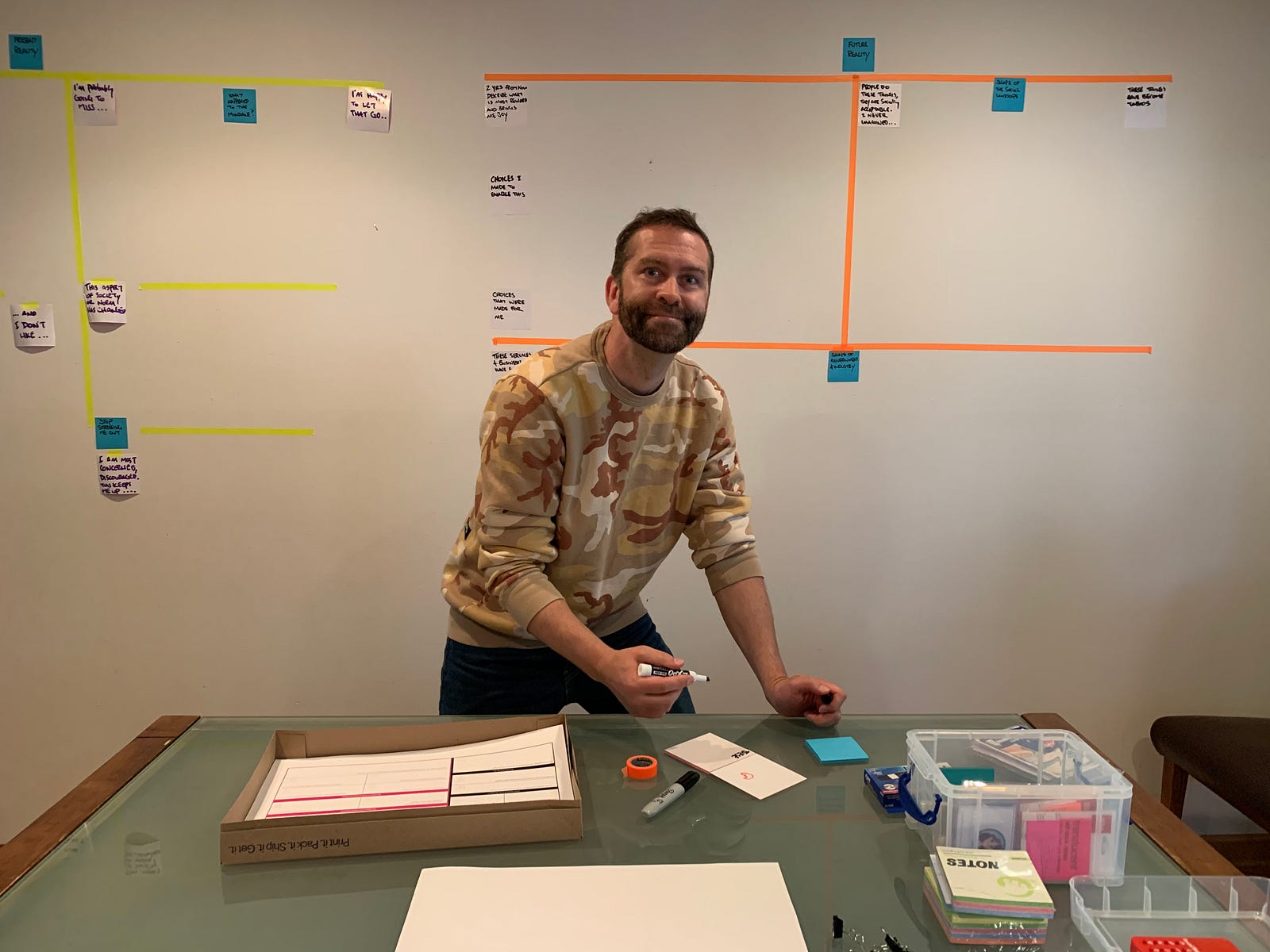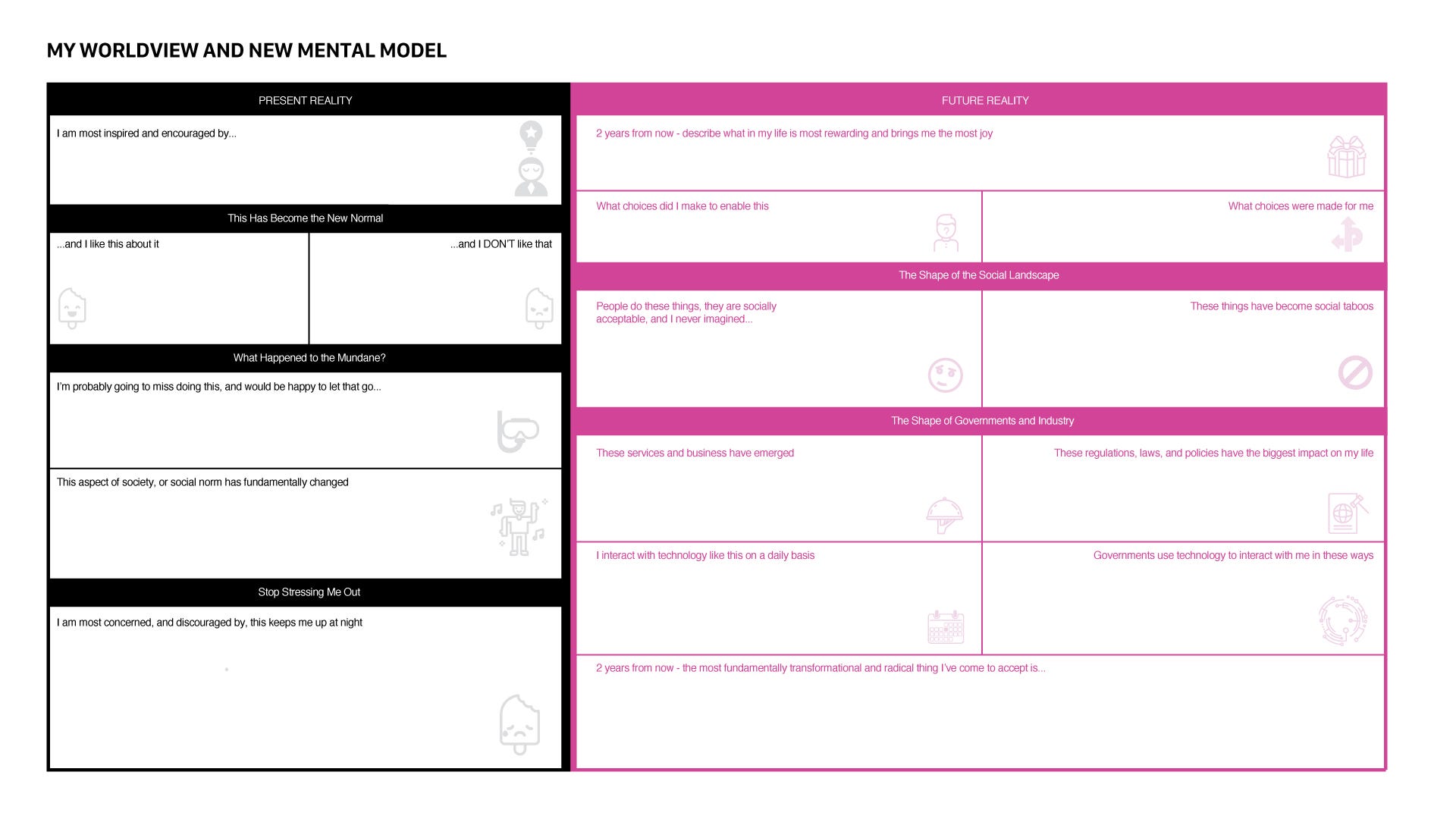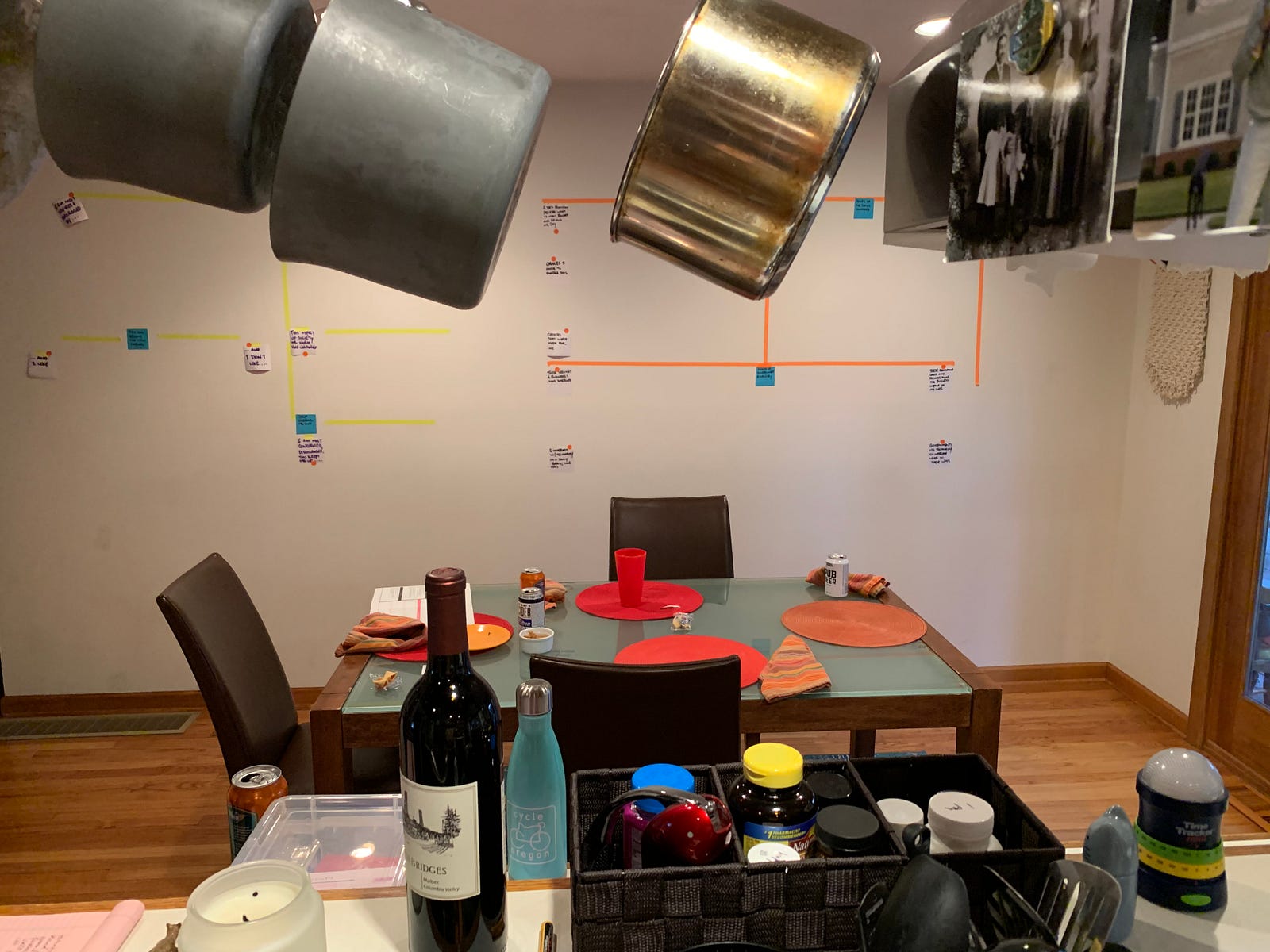
What Now? What Next?
Design Thinking-Inspired Activities for Home Use, in the COVID19 Moment
Like many of you I’ve been thinking a lot about how the CV19 situation will change aspects of our day-to-day lives. This has hit home for friends, families and foes, and we are all impacted in different ways.
- Will this accelerate new industry innovations?
- Will this be the end of the line for some businesses?
- Will this drive us further apart, or closer together?
At the outset of the stay at home orders in March I tried to internalize and think objectively about the uncertainty ahead.
The social fabric is changing. It’s important to me to find some way of objectively weighing the possible outcomes, and focus on outcomes I can control, while also maintaining a sense of optimism.
To grapple with the questions above, I looked to a method I routinely use at work to objectively weigh factors and possible outcomes, and I put together a this “design-thinking workbook” for home use. I developed the workbook as an objective framework and jumping-off point with thought-starters to guide discussions. I shared it with friends and family as a way to start “exploring the art of the possible”.
To put this into action my wife and I hosted a small design thinking dinner with her sister and husband (our quarantine cohort), which was actually pretty fun. This is a summary of how it went, with highlights of key themes that arose.

The “What Now? What Next?” Framework
These six sections below are the framework for a series of questions and thought-starters. For our get together we focused on topic #1, the world-view canvas (image depicted below).
- The World View Canvas – Consider your current, and future reality.
- Social Fabric Evolution – Stop. Continue. Start.
- Government and Industry Shifts – Policies, and Business Models
- Where Might Jobs Go – What consumer demand will emerge?
- Will My Career Survive – How to adapt and plan for the future?
- How Will I Thrive – What can I control, what might change?

Your Worldview and Mental Model
I’ll admit it, the first activity is a big lift. There’s an investment to be made that requires some mental energy to get into a good headspace for this exercise. There’s self-reflection, and contemplation, and it can be a challenge to put emotions aside and be objective. However, this step is important, and will help lay the ground work for the subsequent activities. At the end of the day, you get out of it what you put into it.
Prior to getting together, we decided as a family to self-isolate for a few weeks in order to feel confident we could safely connect with and rely on each other. So, after a month or so we asked ‘the grandparents’ to watch our daughter for the night. My wife’s sister picked up Thai food for takeout, and came over to our house. We took some time to state our intent, and objectives and shared thoughts about the current climate.

Some of the things we did to prepare: I shared the workbook, and we individually gathered our thoughts ahead of time (kinda). I took down the art in our dining room and recreated the canvas on the wall. I got some awesome sticky notes called “gecko pads” that are static cling and have one surface which is dry erase. My brother in law accused me of conducting this get together as an excuse to try out some new office supplies. I also printed out the workbook in large format (11×17) at Kinkos.

Putting our thoughts in order
We took an hour, and set 5 minute timers during which we wrote our thoughts on sticky notes for each of the quadrant of the canvas.

Talking it through
We then took another hour and set 5 minute timers. Each person elaborated on their sticky notes so we could begin to see themes emerge. We let it flow organically and took the time to each share our thoughts on each topic. We followed some of the key ground rules, such as one person talks at a time, and all perspectives are valid. We then quickly identified key themes before moving on to the next topic. To be honest, this spurred some healthy discussion and at times we completely disregarded the timer. All in all I think we spent about an hour and a half in this part of the activity and it felt about right (the wine helped).
So, we spent about 2.5 hours overall, and that was about max capacity.
Working through the world view canvas collaboratively was a great outlet and good way for us to channel some of our thoughts. It helped us create a platform for an open discussion, and also helped put into words some of the feelings we’ve been having. It also set the stage for future dinner party discussions using the rest of the design thinking activities in the workbook.
Highlights and Key Themes
The following evening I took photos, and transcribed it all. I posted it to a shared google doc location where it lives on for us to reflect, review and keep alive. It also allowed me to open up collaboration with some of my friends who are self-isolating and do this remotely.
Below are some of the key themes that emerged around each topic. I’m not going to cover every sticky note, thought or comment (but if you want to dig into the details feel free to contact me). The themes were:
Present Reality
- What I am most inspired and encouraged by:
Having the rug pulled out has forced us to take stock of what’s important. This experience is making us tighter.
2. This has become the new normal:
Less rush. Less perfection. Doing less, with less.
I miss hugging.
No more “me time”.
Epic failure of leadership.
3. I’m probably going to miss doing this:
Simple pursuits and happy accidents.
Small talk with strangers.
Ease of movement.
Freedom.
Travel.
4. I’ll be happy to let this go:
The daily commute.
The illusion I’m in control.
Obsession with Social Media.
Cash Transactions.

Future Reality and Shape of the Social Landscape.
This section explored thoughts around the near and long term horizon 6 months to two years out.
- Two years from now, describe what in my life is most rewarding and brings me the most joy.
Volunteering with school art projects/maker projects.
Purposeful work, rooted in service.
Having a more balanced workload.
Investing in self.
Fewer focus areas.
2. Choices I made to enable these items above
Reduced work hours.
Said yes more, and no more.
Doing less with less.
Insisting on telework.
3. Choices that were made for me
Hyper competitive job markets
Political machine swinging the other direction
School hours, approach fundamentally changed
4. People do these things, they are socially acceptable
Respect for flu/corona season
More virtual connections, FB invite syndrome
Identity tracking and overt surveillance
People turn their back and cover their face when you walk by
5. These things have become taboos
No touching without consent
Unannounced AR phone calls
Coming in to work sick
The shape of governments and industry
This section starts to introduce more ideation and brainstorming around how our economy might shift.
- These services and business have emerged
Mass delivery infrastructure
Virtual workspaces
More gig economy, fewer FTEs
More telemedicine, especially mental health
2. These regulations, laws, policies have the biggest impact on my life
Fundamentals of school and raising a child have changed
More socialist taxes and infrastructure
Sustainable energy initiatives
Reasonable gun laws

I’ll go ahead and pause here — obviously there are a lot of areas of our lives as well as the world around us being impacted. This truly is a global transformation moment.
My intention is that this outline provides a constructive way to engage and think about it. I also hope that it helps to illuminate opportunities, or potential paths forward that help us continue to not only survive, but also find ways to thrive in uncertain times.
Here’s a link to the full PDF if you’d like to download it:
